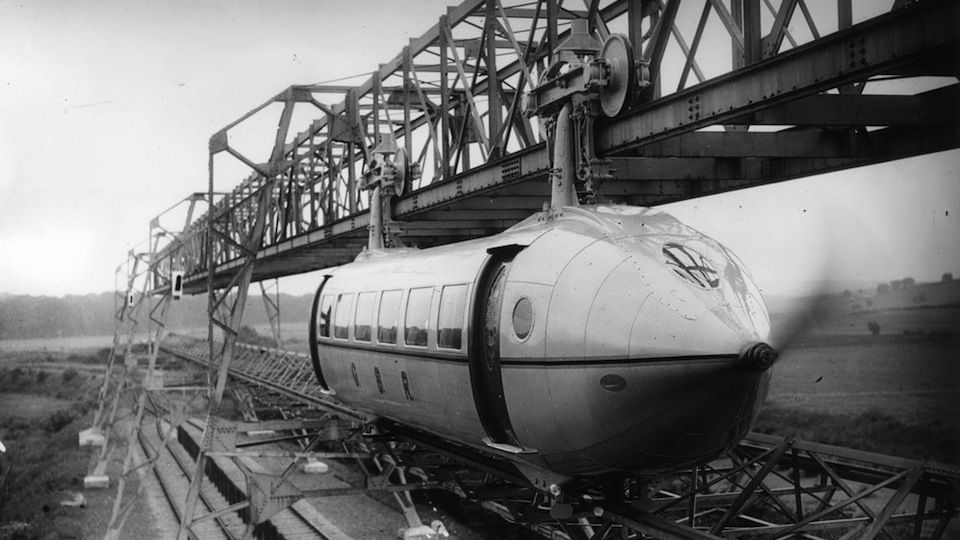
In a slight twist of fate, we might have been traveling between London and Paris in one of these thing-a-majigs– or more accurately, a propeller-driven ‘Flying Railplane‘. This fancy futurist contraption was invented by George Bennie and launched in 1930 as a prototype, designed for a more economical and rapid transport system between the two European capitals.
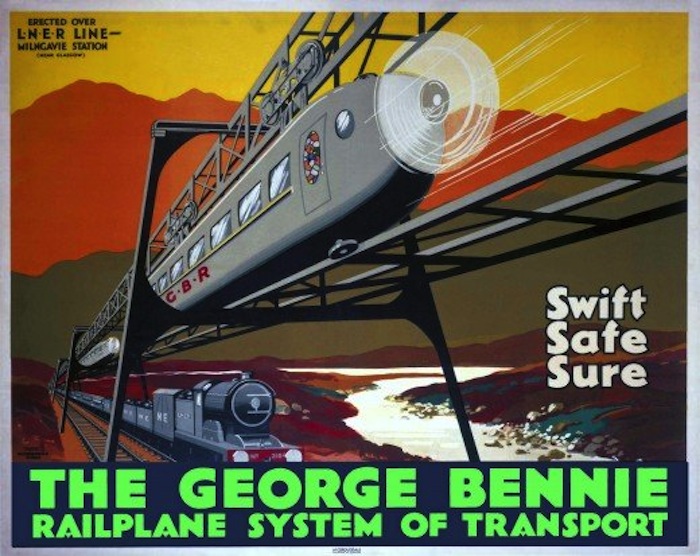
The test track was built in a commuter town called Milngavie in Glasgow, Scotland. It ran over 120 meters suspended a dozen feet above the ground with rails to support the cigar-shaped train both overhead and underneath. Electric propellors at either end moved the train forward.
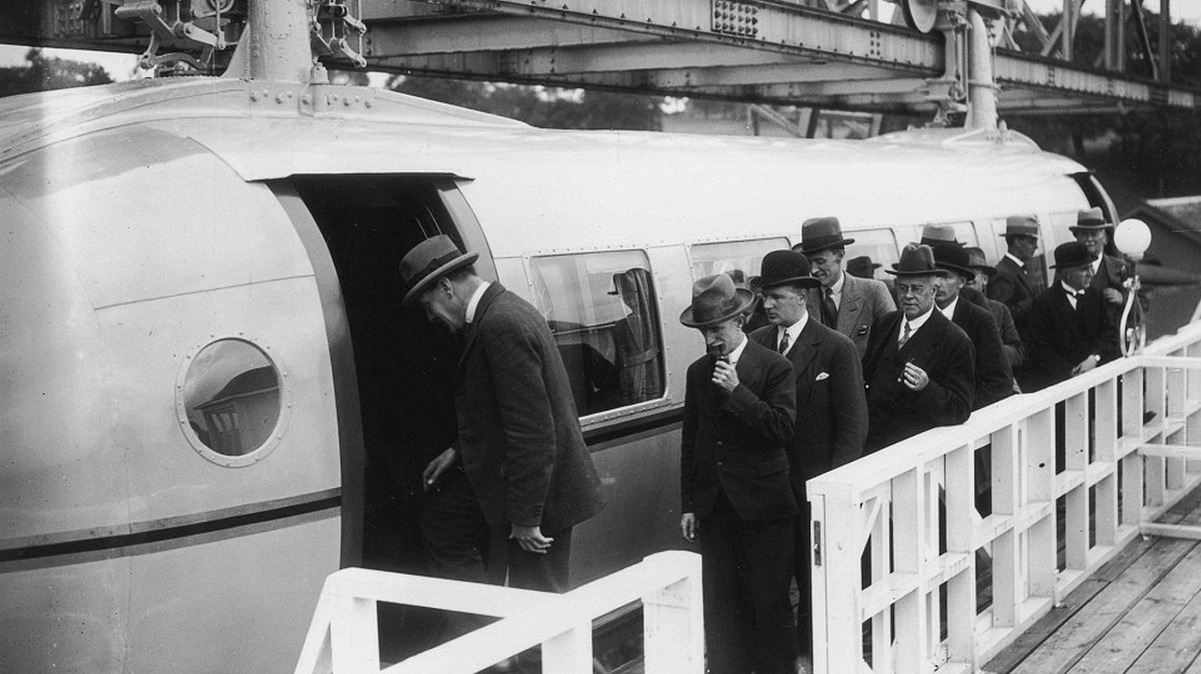
When the media was invited to take a ride on the rail plane in July of 1930, they were quite taken with it, and hailed it a ‘wonderful product of British brains’. Compared to the bumps and whistling of a conventional train, traveling in Bennie’s railplane coach was luxuriously smooth and quiet. There was only one problem. No one wanted to fund it.
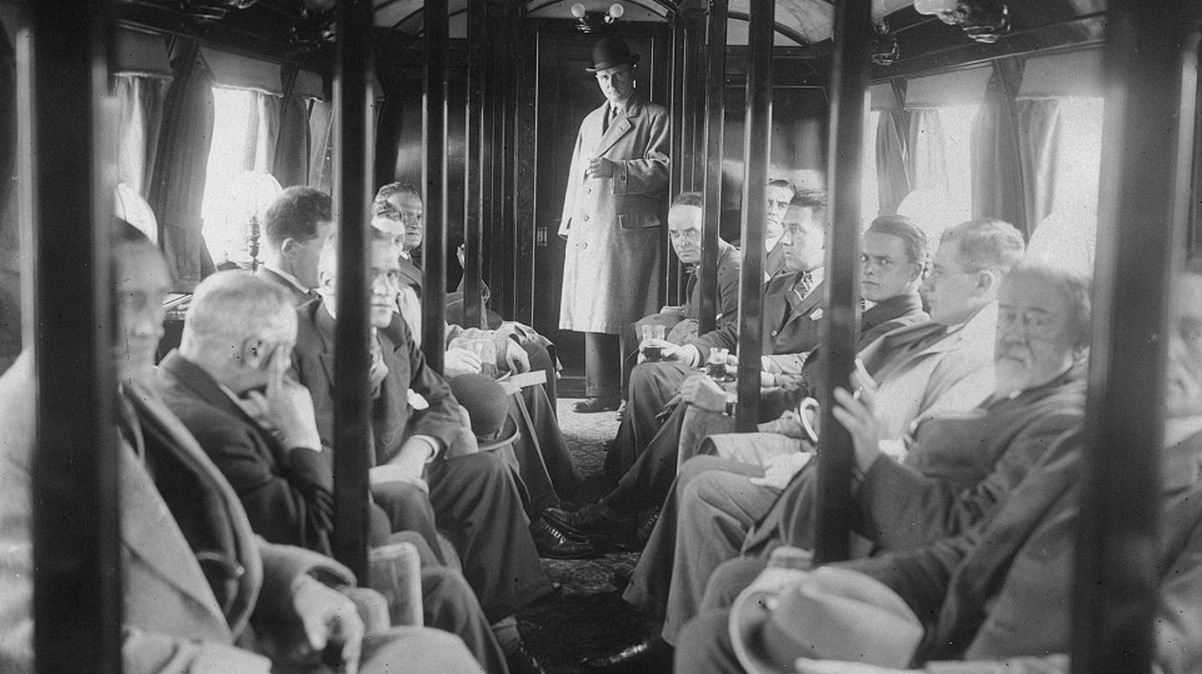
After financing the original test track himself, in 1937 Bennie went bankrupt and the inventor’s dream was over. The test track hung around, quite literally, for another 25 years, rusting and abandoned before it was finally demolished for scrap in the mid 1950s, around the same time Bennie died in obscurity. Ten years after that, the prototype itself was also scrapped. Only the original shed where the carriage was built is still standing with a blue plaque commemorating the Railplane on the wall outside.
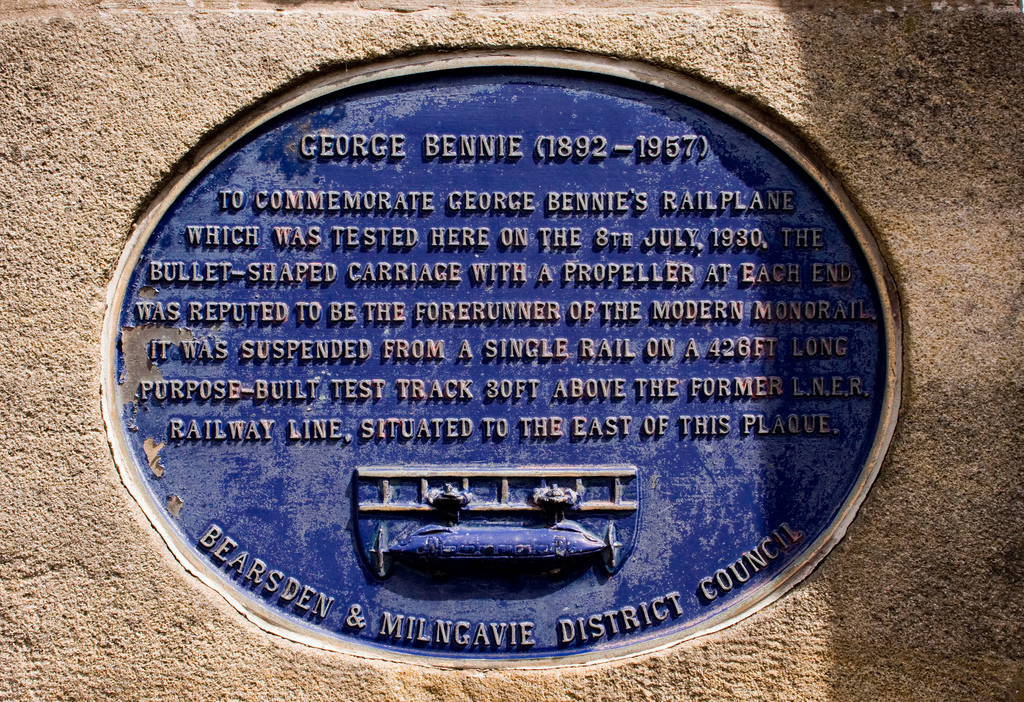
And then the French had a go…
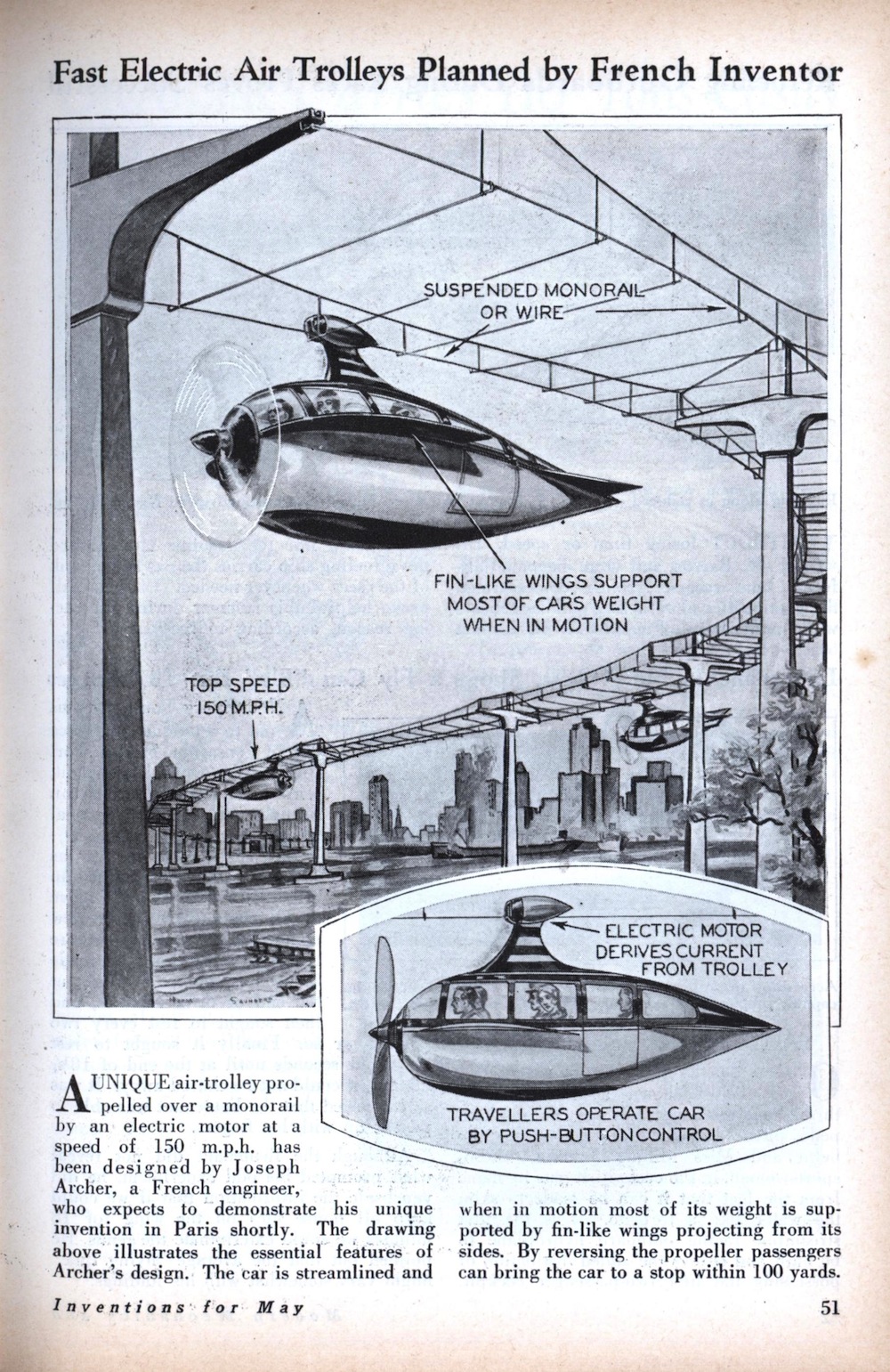
The above article published in May 1930, features a monorail design by engineer Joseph Archer, but not for another 35 years would the French see their own ‘flying railplane’ realised from an inventor’s sketchbook…
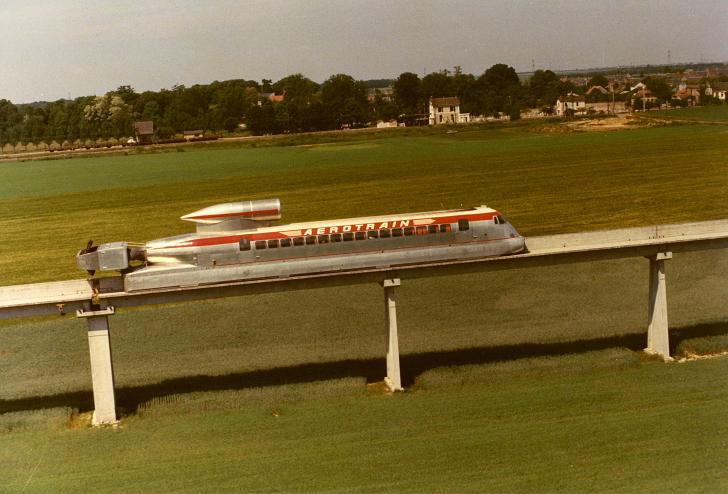
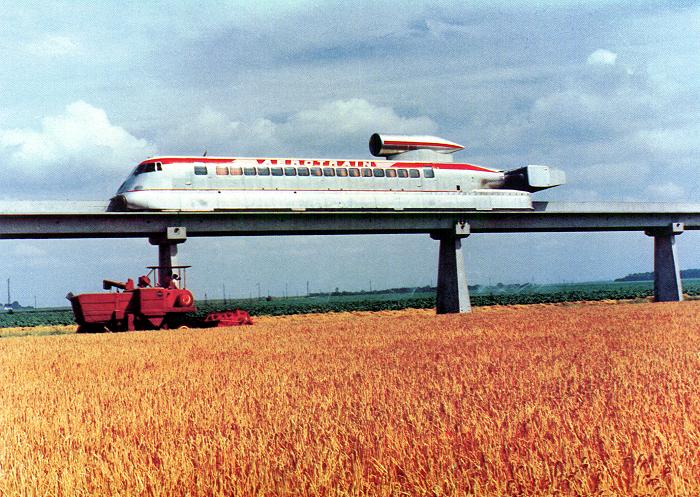
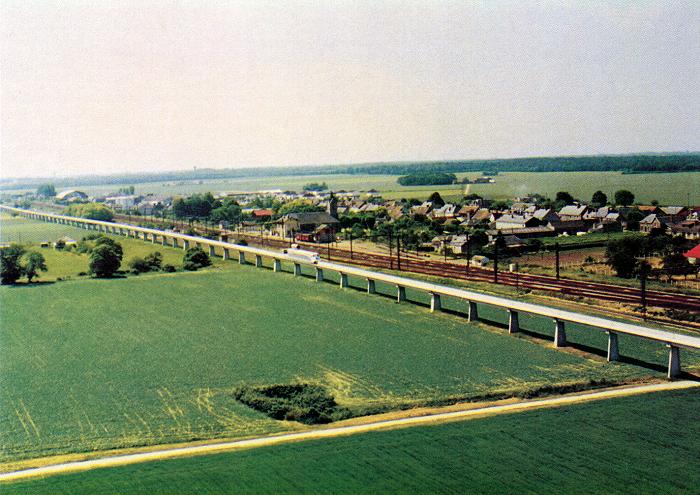
Enter the Aérotrain, the monorail hovertrain developed in France from 1965 to 1977 by engineer Jean Bertin. While this revolutionary yet experimental mode of transport is now very much defunct, unlike its British counterpart, you can still find its abandoned elevated tracks parallel to the the Paris-Orleans railway route…
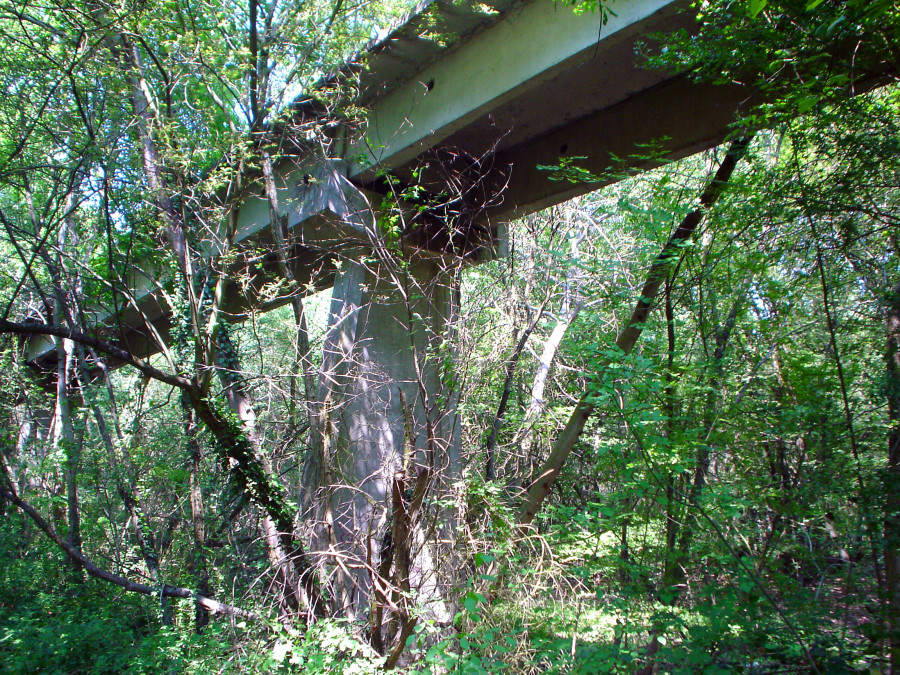
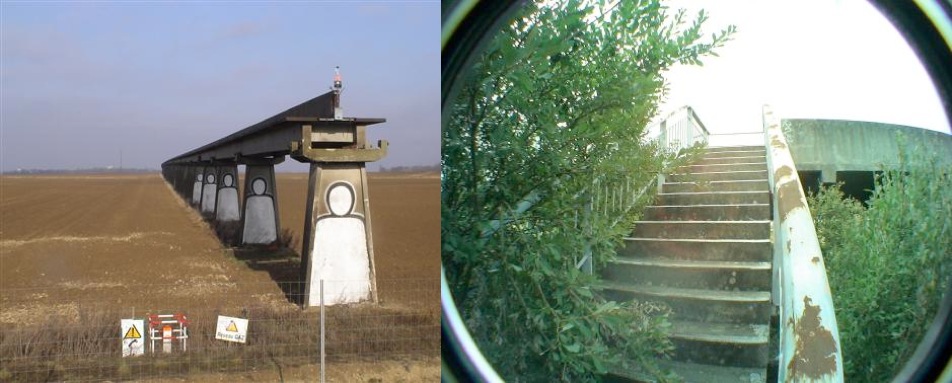
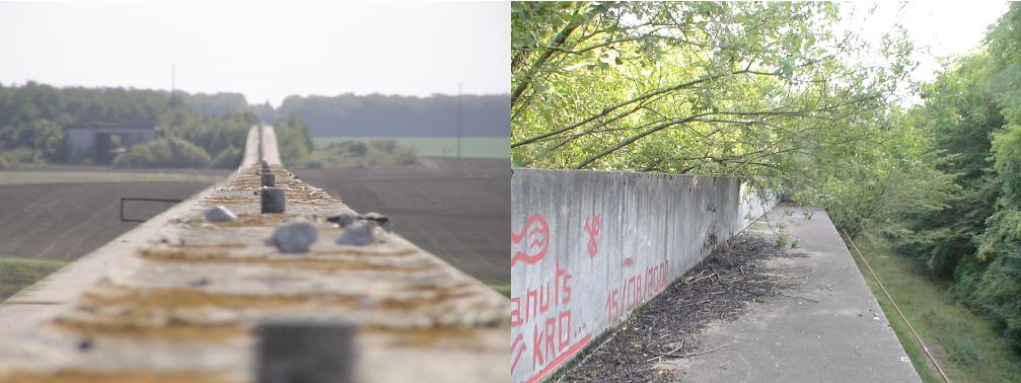
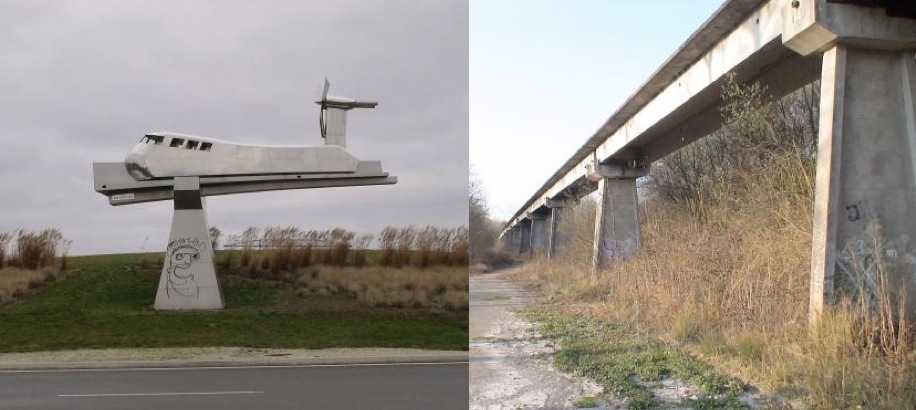
In Gometz-la-Ville, where the track is most overgrown, a vandalised sculpture of the aérotrain is the sole clue as to what purpose the aged and forgotten concrete structure served. Some parts of the tracks (originally more than 25km in total) have been demolished to make way for highways while others are completely intact more than 40 years later. The first prototype aérotrain set the speed record for trains in the 1960s at 430 km/h, a time that would take France’s current high-speed rail service, TGV, another 20 years to beat.
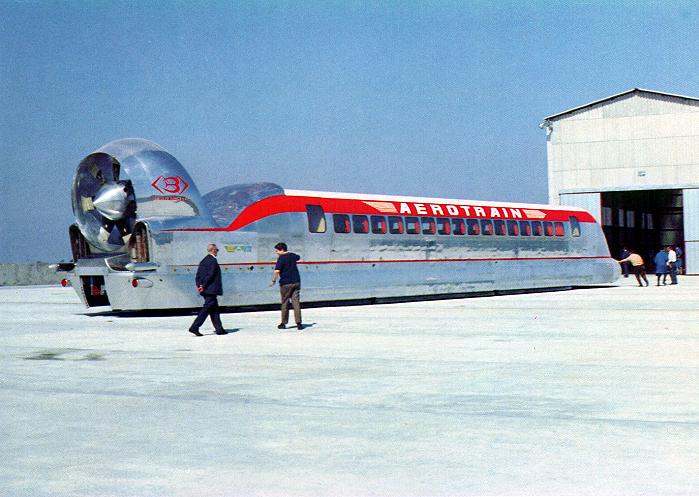
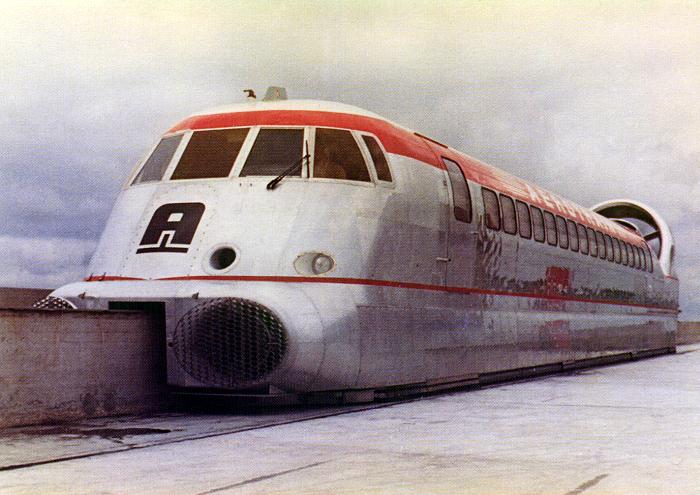
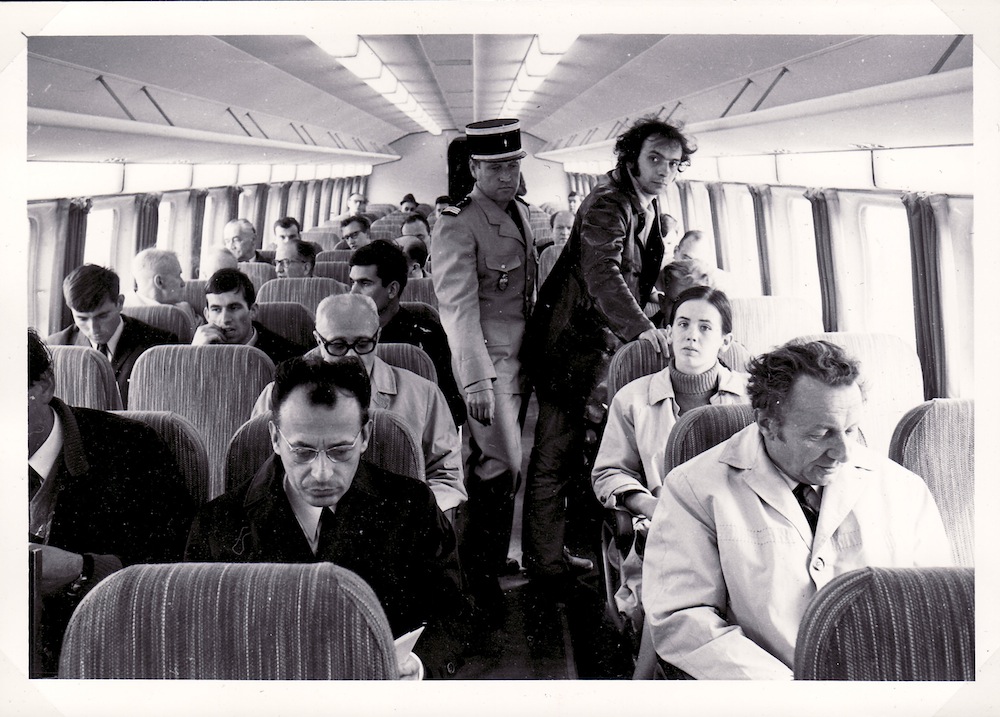
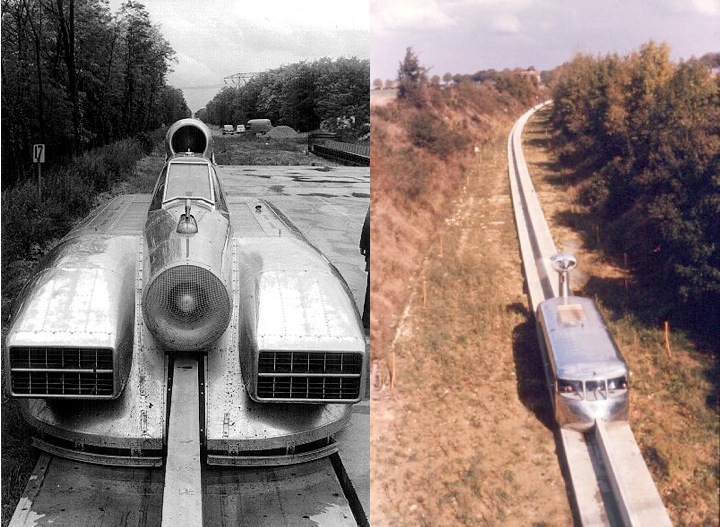
Under President Georges Pompidou, the project received government approval in 1965 and continued its successful development until the mid 1970s. Political power shifted and with it came the adoption of the TGV by the French government as its high-speed ground transport solution, subsequently ending the aérotrain adventure. The financial interests of some were too powerful for the visionary engineer Jean Bertin and his talented collaborators, who had dedicated their lives to the project. Bertin’s death from cancer came soon after and what seemed like continuous sabotage of the aérotrain’s future eventually saw the whole venture entirely abandoned.
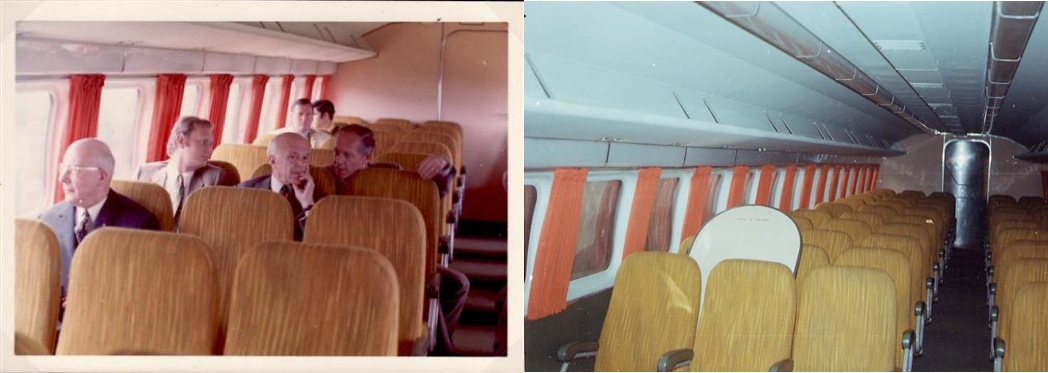
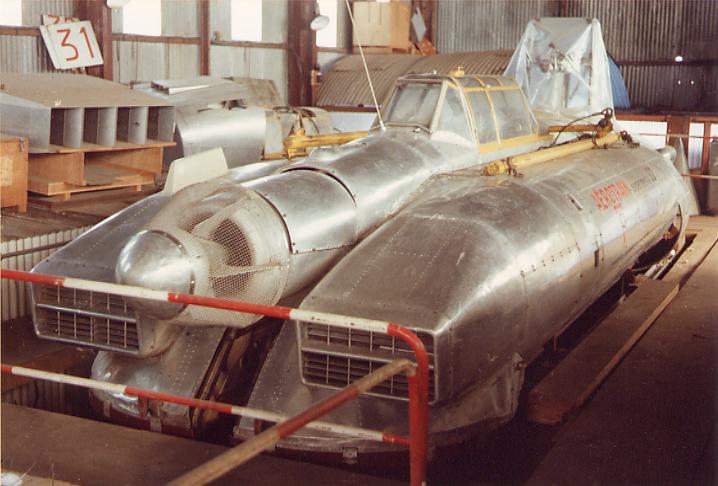
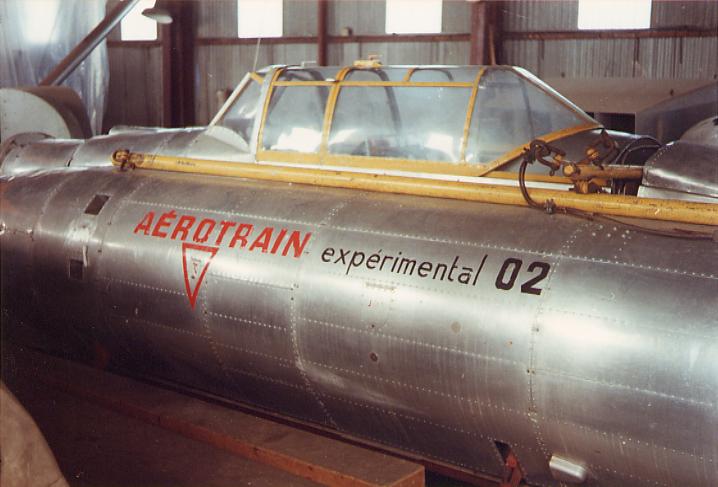
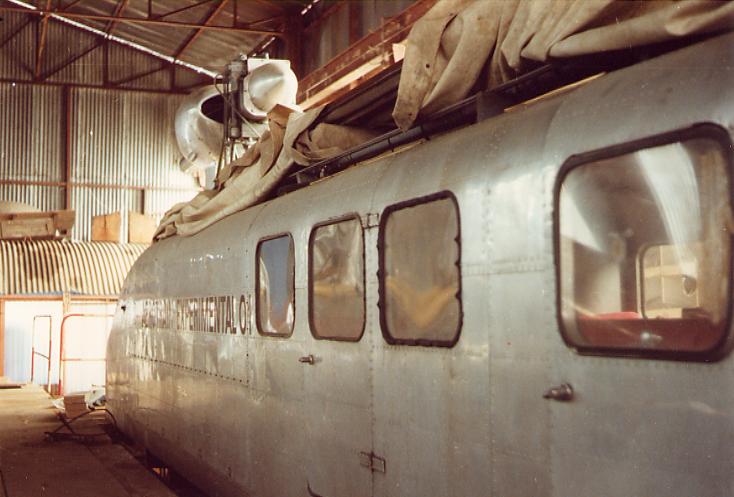
The prototypes were kept in the hangar at Chevilly but some disrespectful visitors saw to it that they didn’t stay in good condition for very long…
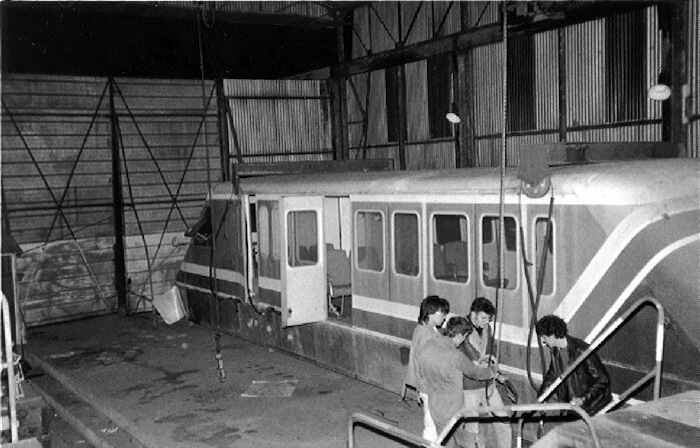
The first prototype was restored and moved to Jean Bretin’s association in a secure location, but in 1991 a fire destroyed one of the remaining prototypes in Chevilly while the others were badly damaged. Talks for a museum housing the surviving aérotrains began in 1992, but just before approval from the Ministry of Transport came through, another fire almost destroyed everything left in the hangar. Charred remains of the trains were scrapped and the abandoned hangar was demolished in 1997.
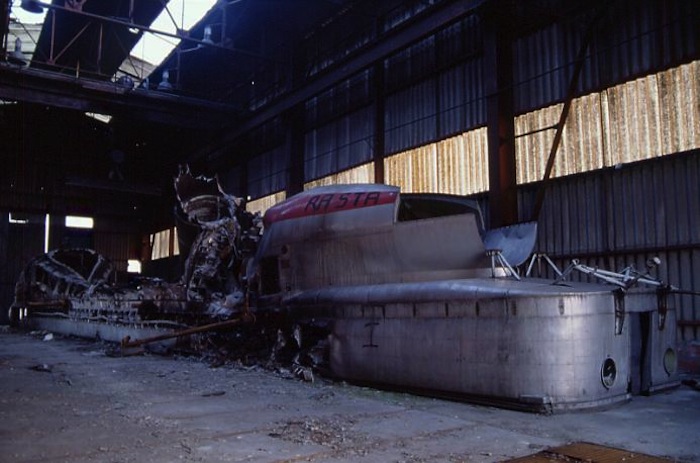
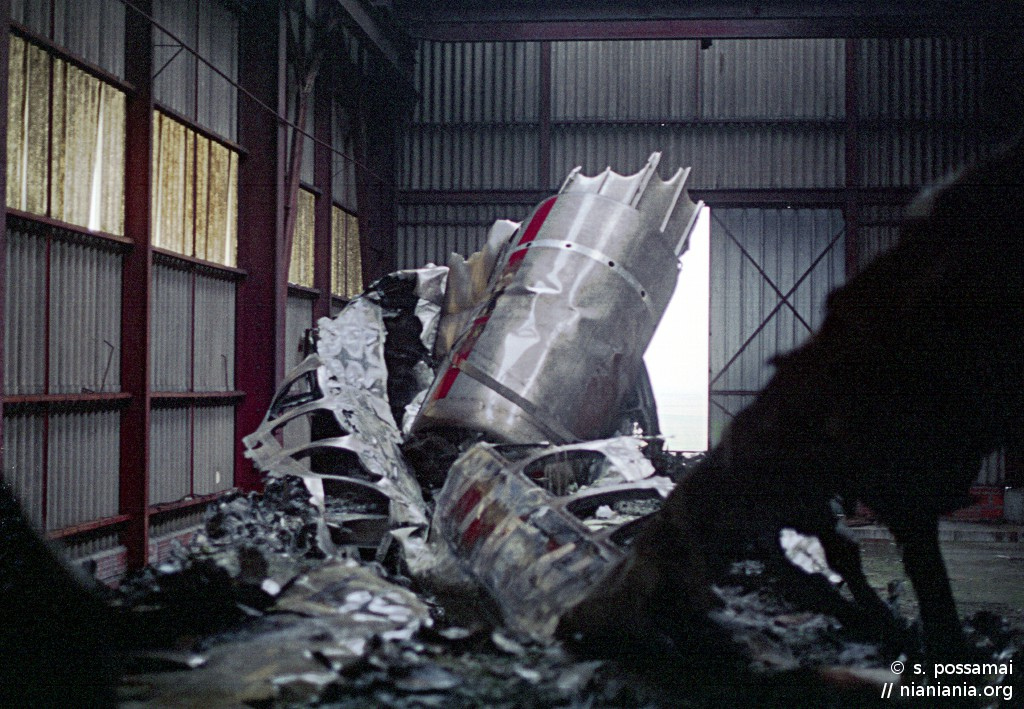
It wasn’t until 2001 that the last restored Aérotrains from Bretin’s association would be seen again by the public at the Retromobile exhibition in Paris. The only other visible trace of the Aérotrain’s existence are the remains of the concrete track it once flew over.
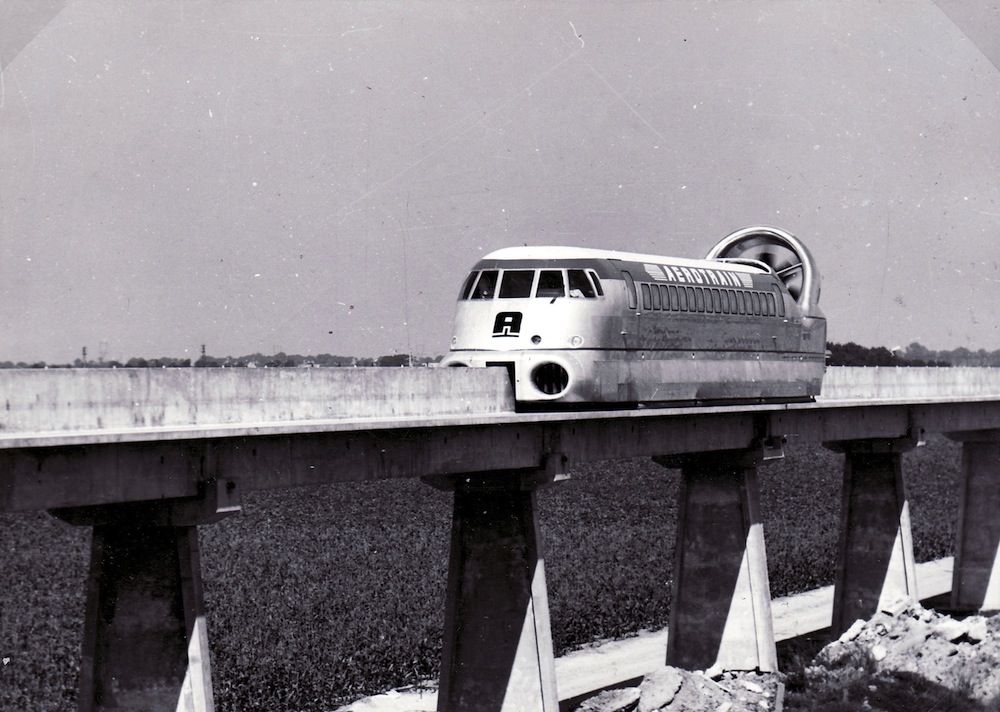
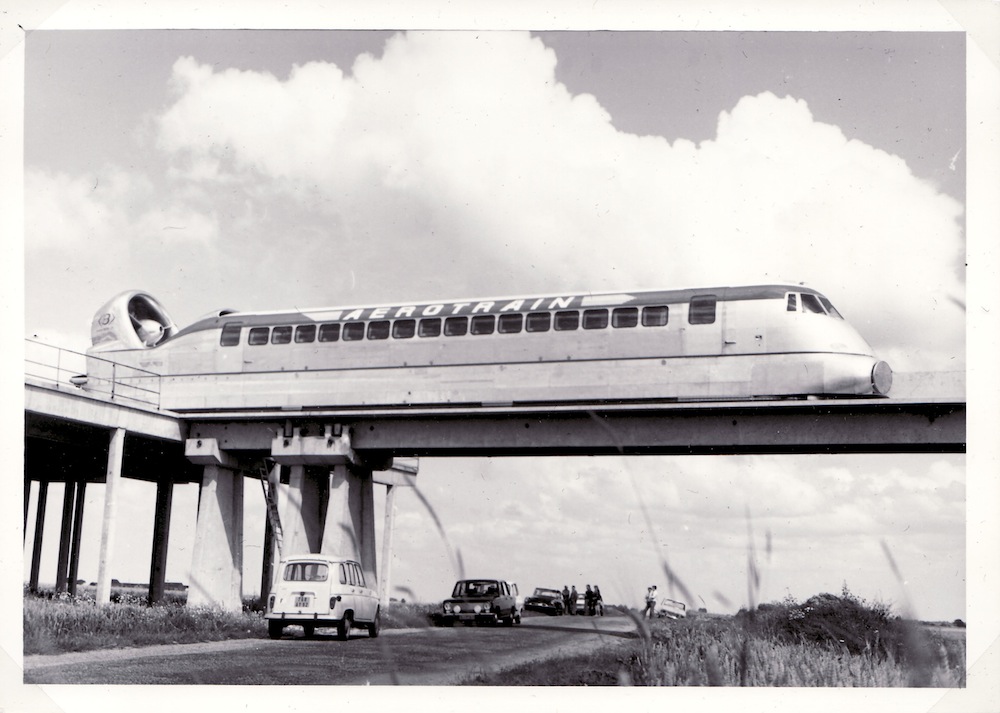
As fine and dandy as the Eurostar and the high-speed TGV trains are, who doesn’t wish the future had brought us the flying railplane?!
Images via here, here and here.
















